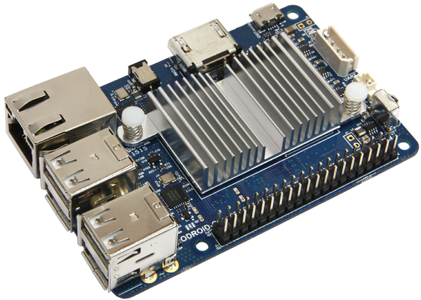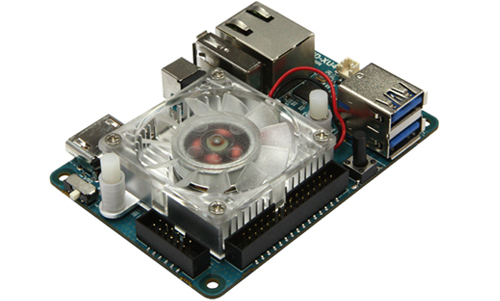The more cores (at just 5v for the complete board mostly) the merrier, so no less than a quad will be recommended here.
If you want low cost on both purchase and running:
- The Raspberry Pi2, featuring a Broadcom BCM2836 (a quad-core Cortex-A7@900MHz) based credit card sized board at some $35.
- The Odroid-C1+, featuring an Amlogic S805 (a quad-core Cortex-A5@1500MHz), a credit card sized board at some $37.
- The Banana Pi M2, featuring an Allwinner-A31s (a quad-core Cortex-A7@1000MHz), a credit card sized board at some $50.
Tip: the Banana Pi M3, featuring an Allwinner-A83t (an octa-core Cortex-A7@1800MHz), a credit card sized board at some undisclosed yet $$.
Tip2: a so-called android-tv running on a Rockchip 3288, a quad-core Cortex-A17@1600MHz.
When you want to spend a little more on purchase:
- The Odroid-XU4, featuring a Samsung Exynos5422 (an Octa-core made out of a quad-core Cortex A15@2000MHz and a quad-core Cortex-A7@1400MHz in big.LITTLE) at some $75.
- The Cubietech Cubieboard4/CC-A80, featuring an Allwinner-A80 (an Octa-core made out of a quad-core Cortex A15 and a quad-core Cortex-A7 in big.LITTLE), at some $125.
- The Pcduino 8A, featuring an Allwinner-A80 (an Octa-core made out of a quad-core Cortex A15 and a quad-core Cortex-A7 in big.LITTLE), at some $136.
Tip: a so-called android-tv running on a Rockchip 3368, a octa-core Cortex-A53@1500MHz.









 Reply With Quote
Reply With Quote




